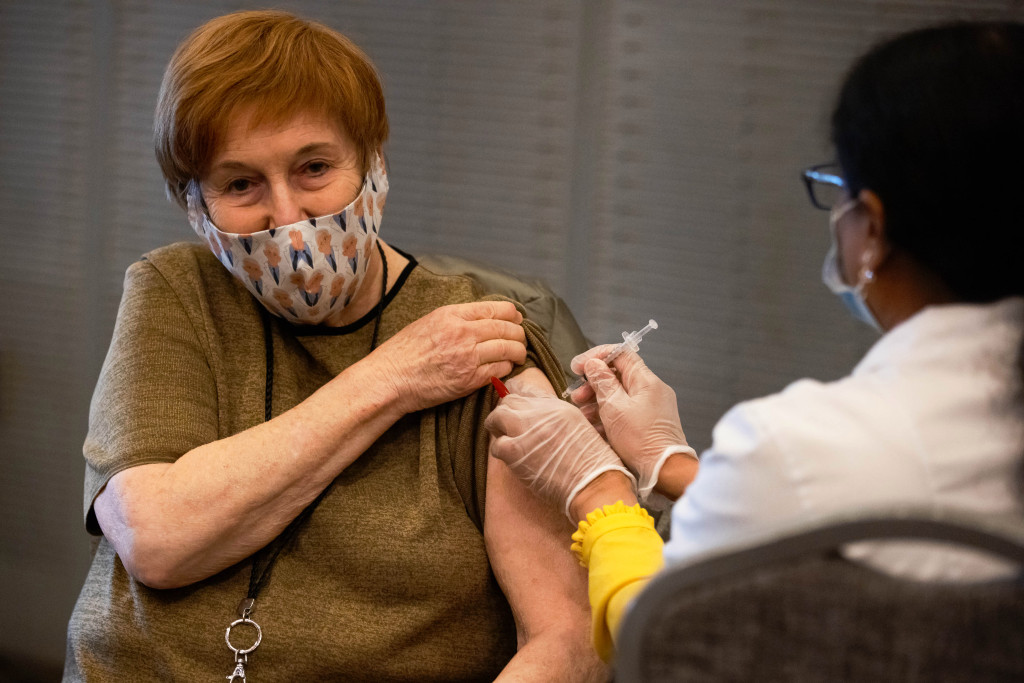About one in seven Californians, 14.8 percent, have received at least one COVID-19 vaccine dose, a positive sign after one of the slowest vaccination rollout starts in the nation.
In California, 19.1 percent of residents 18 and older have received at least one vaccine dose, and 6 percent of all residents have received both doses, according to the Center for Disease Control and Prevention. In total, 8,243,711 vaccine doses have been administered in California, 76 percent of the doses delivered, according to the state’s Department of Public Health.
At the same time, the seven-day average of new cases is at its lowest point since early November, at the start of a massive winter surge that set new records for infections and deaths in the state. On Friday, California counties reported 6,975 new COVID-19 cases, according to data tracked by this news organization, for a seven-day average of 5,385 daily new cases.
Los Angeles County, the largest and hardest-hit in the state, reported 1,758 new cases, San Bernardino County reported 743 cases and San Diego County 662 cases, followed by Santa Clara, Kern and Orange counties.
The number of patients hospitalized with confirmed cases of COVID-19 has also been improving. On Thursday, there were 5,590 patients, a 5.8 percent decline from the preceding day and a 75 percent decrease from an early January peak. There are also 1,640 patients in intensive care unit beds with confirmed cases of COVID-19, a 4 percent decline from the preceding day and a 66 percent decline from a peak in early January.
Despite rising vaccinations and declining case rates, deaths remain high in the state. On Thursday, counties reported 438 COVID-19 fatalities. The state has a seven-day average of 423 daily deaths, although that average was increased by the more than 800 fatalities that occurred in Los Angeles County between Dec. 3 and Feb. 3 but were not included in public tallies until Wednesday.
On Thursday, Los Angles County reported 139 deaths from COVID-19, San Bernardino reported 110 deaths and Fresno 21 deaths, followed by San Joaquin, Riverside and Alameda counties.
In the Bay Area, Santa Clara County has reported the most cases, and on Friday added 396 cases and 12 deaths for a total of 110,237 cases and 1,777 deaths since the start of the pandemic. Alameda County reported 191 cases and 17 deaths for a total of 80,279 cases and 1,241 deaths. Contra Costa County reported 203 cases and no new deaths for a total of 62,367 cases and 674 deaths.
San Mateo County reported 55 cases and 13 deaths for a total of 38,674 cases and 515 deaths, and San Francisco reported 131 cases and 12 deaths for 33,910 cases and 410 deaths.



















